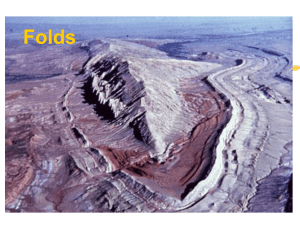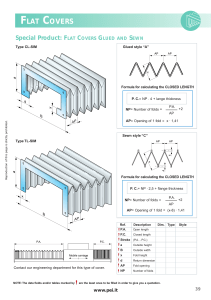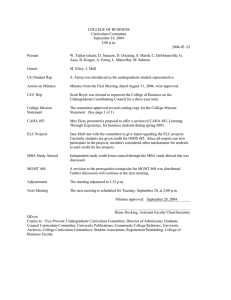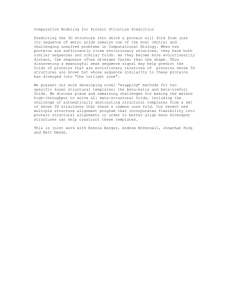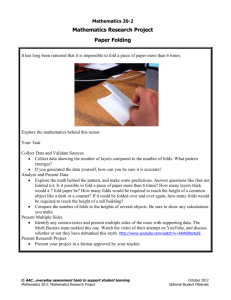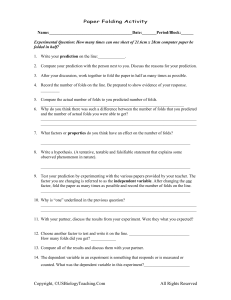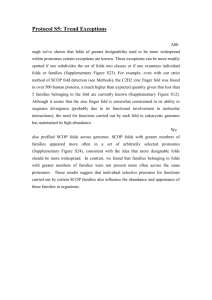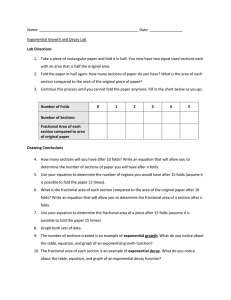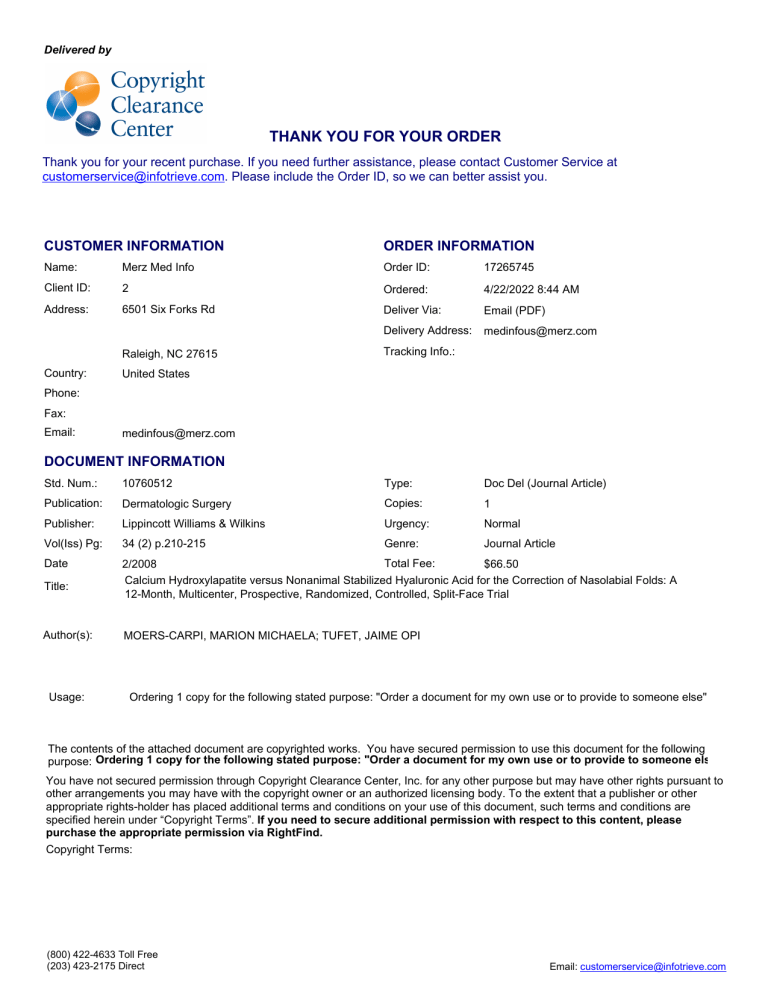
Delivered by THANK YOU FOR YOUR ORDER Thank you for your recent purchase. If you need further assistance, please contact Customer Service at customerservice@infotrieve.com. Please include the Order ID, so we can better assist you. CUSTOMER INFORMATION ORDER INFORMATION Name: Merz Med Info Order ID: 17265745 Client ID: 2 Ordered: 4/22/2022 8:44 AM Address: 6501 Six Forks Rd Deliver Via: Email (PDF) Delivery Address: medinfous@merz.com Raleigh, NC 27615 Country: Tracking Info.: United States Phone: Fax: Email: medinfous@merz.com DOCUMENT INFORMATION Std. Num.: 10760512 Type: Doc Del (Journal Article) Publication: Dermatologic Surgery Copies: 1 Publisher: Lippincott Williams & Wilkins Urgency: Normal Vol(Iss) Pg: 34 (2) p.210-215 Genre: Journal Article Title: Total Fee: $66.50 2/2008 Calcium Hydroxylapatite versus Nonanimal Stabilized Hyaluronic Acid for the Correction of Nasolabial Folds: A 12-Month, Multicenter, Prospective, Randomized, Controlled, Split-Face Trial Author(s): MOERS-CARPI, MARION MICHAELA; TUFET, JAIME OPI Date Usage: Ordering 1 copy for the following stated purpose: "Order a document for my own use or to provide to someone else" The contents of the attached document are copyrighted works. You have secured permission to use this document for the following purpose: Ordering 1 copy for the following stated purpose: "Order a document for my own use or to provide to someone else" You have not secured permission through Copyright Clearance Center, Inc. for any other purpose but may have other rights pursuant to other arrangements you may have with the copyright owner or an authorized licensing body. To the extent that a publisher or other appropriate rights-holder has placed additional terms and conditions on your use of this document, such terms and conditions are specified herein under “Copyright Terms”. If you need to secure additional permission with respect to this content, please purchase the appropriate permission via RightFind. Copyright Terms: (800) 422-4633 Toll Free (203) 423-2175 Direct Email: customerservice@infotrieve.com Calcium Hydroxylapatite versus Nonanimal Stabilized Hyaluronic Acid for the Correction of Nasolabial Folds: A 12-Month, Multicenter, Prospective, Randomized, Controlled, Split-Face Trial MARION MICHAELA MOERS-CARPI, MD, AND JAIME OPI TUFET, MDy BACKGROUND Fillers continue to proliferate in dermatology. Rigorous clinical trials can help determine the advantages and disadvantages of these products as they come to market. OBJECTIVE This randomized, split-face, controlled study compared the efficacy, safety, durability, and volumes of calcium hydroxylapatite (CaHA) versus nonanimal-stabilized hyaluronic acid (NASHA) in nasolabial folds. METHODS AND MATERIALS Sixty patients were enrolled at two medical clinics in Europe (Summer 2005). Patients received two injections 3 months apart. Patients returned at 6, 9, and 12 months for a blinded evaluation, using accepted aesthetic rating scales. Adverse events were recorded throughout the study. RESULTS At all time points, CaHA was found to be more effective than NASHA. At 12 months, 79% of CaHA folds were still improved or better versus 43% of NASHA folds (po.0001). In addition, 30% less total CaHA volume was required compared to NASHA. Evaluators assessed CaHA as superior in 47% of patients and inferior in only 5% (po.0001). Blinded evaluators and patients preferred CaHA two to one (p o.05). Both products were safe and well tolerated. CONCLUSION CaHA was found to be significantly more effective than NASHA. At all time points, CaHA demonstrated longer lasting results and greater improvement than NASHA. Bioform Medical, Inc. (San Mateo, CA), provided Radiesse, study funding, and photographic documentation equipment to the authors. Dr. Moers-Carpi also received compensation for presentations about Radiesse to the medical community. N oninvasive treatments as supplementaryFand complementaryFoptions to surgery have increasingly become an acceptable part of the aesthetic caregiver’s regimen. In the United States, for example, from 1997 to 2005, the number of nonsurgical procedures rose from approximately 1 million to more than 9 million; the number of surgical procedures rose from approximately 1 million to just over 2 million.1 Soft tissue fillers, along with neurotoxin-induced denervation, constitute a large part of the nonsurgical category. In the past, collagen products (bovine, autogenic, and isogenic) and hyaluronic acid deriv- atives have often been the products of choice for soft tissue fillers.2–5 Earlier studies have compared collagen to two distinct hyaluronic acid formulations.2,6 Both of those important studies used the same ratings systemsFthe Global Aesthetic Improvement Scale (GAIS)2 and the Wrinkle Severity Rating Scale (WSRS).7 Also using the WSRS and the GAIS, this article reports the results of a comparison study of calcium hydroxylapatite (CaHA; Radiesse, Bioform Medical, Inc., San Mateo, CA) to nonanimal-stabilized hyaluronic acid (NASHA; Restylane, Medicis Aesthestics Inc., Scottsdale, AZ) for the correction of Private Clinic, Hautok, Munich, Germany; yPrivate Clinic, Barcelona, Spain & 2007 by the American Society for Dermatologic Surgery, Inc. Published by Blackwell Publishing ISSN: 1076-0512 Dermatol Surg 2008;34:210–215 DOI: 10.1111/j.1524-4725.2007.34039.x 210 MOERS-CARPI AND TUFET nasolabial folds. In late December 2006, Radiesse received U.S. Food and Drug Administration approval for subdermal implantation for the correction of moderate to severe facial wrinkles and folds, such as nasolabial folds, and for restoration and/or correction of the signs of facial fat loss (lipoatrophy) in people with human immunodeficiency virus. Methods Study Objective The objective of this study was to assess the effectiveness and longevity of CaHA versus NASHA for the correction of nasolabial folds. Patient Population Sixty patients were enrolled in the trial (52 females and 8 males). The mean age was 50.5 years (range 34–67 years). Enrolled patients had moderate to severe nasolabial folds, i.e., a rating of 3 or 4 on the WSRS. Design The study was a multicenter (Germany and Spain), prospective, randomized, split-face, controlled trial. Ethics committee approval was obtained before study initiation. Inclusion criteria were as follows: right and left nasolabial fold with a rating of 3 or 4 on WSRS by the blinded evaluator, 18 years of age or older, signed written informed consent, understood and accepted the obligation not to receive any other facial procedures through 12-month follow-up, understood possibility of unevenness in the nasolabial folds that would not be corrected until the 12-month follow up visit, and understood and accepted the obligation and would be logistically able to appear for all scheduled follow-up visits. The study protocol conformed to the guidelines of the 1975 Declaration of Helsinki. Exclusion criteria were as follows: known bleeding disorder; history of keloid formation or hypertrophic scarring; chronic or recurrent infection or inflammation that would preclude participation in the study; severe allergies manifested by history of anaphylaxis; being pregnant, lactating, or not using reliable contraceptive methods (if applicable); had received or anticipated receiving antiplatelets, anticoagulants, thrombolytics, vitamin E, or anti-inflammatories from 1 week before to 1 month after injection; was receiving systemic corticosteroids or anabolic steroids; had received silicone injections, grafting, any other surgery, or facial tissue augmentation other than CaHA, collagen, or hyaluronic acid in either nasolabial fold within the 6 months before enrollment; the presence of any condition contraindicated in the Restylane labeling; or use of over-thecounter wrinkle products (e.g., a-hydroxy acids) or prescription treatments (e.g., Renova, Retin-A, microdermabrasion, chemical peels) within 4 weeks before study or intent to receive these products and/or treatments during the study. After pretreatment photography using standard technique, anesthetization of the nasolabial folds was performed at the discretion of the treating physician (the physician at the 50-patient German site used no anesthetic; the physician at the 10-patient Spanish site used topical or local anesthetizing agents) and the same tracking (or threading) injection technique was used on both folds. Both products were injected with a 27-gauge needle into the mid to deep dermis. At the initial visit, each patient was treated with CaHA to correct one nasolabial fold and NASHA to correct the other fold. Patients born in an even-numbered year received CaHA in the right fold; patients born in an odd-numbered year received CaHA in the left fold. The volume of injection of CaHA and NASHA necessary for full correction was at the discretion of the treating physician. Physicians were advised to inject enough material to create a robust augmentation and achieve good long-term results. In addition to the above injection instructions, the products were used according to the instructions for use for both products, inclusive of all stated precautions and warnings. After the initial injection, all patients returned at 3, 6, 9, and 12 months for follow-up. At the 3-month visit, 3 4 : 2 : F E B R U A RY 2 0 0 8 211 CaHA VERSUS NASHA FOR THE CORRECTION OF NASOLABIAL FOLDS TABLE 1. GAIS Distribution: CaHA versus NASHA at 6, 9, and 12 Months 6 months (n = 59) 9 months (n = 58) 12 months (n = 58) CaHA NASHA CaHA NASHA CaHA NASHA Very much improved (%) Much improved (%) Improved (%) No change (%) Worse (%) 61 22 14 3 0 32 27 31 10 0 14 22 52 10 2 0 17 38 38 7 3 9 67 21 0 2 2 40 48 9 Total improved (%) p Value 97 90 88 55 79 .05 o.0001 44 o.0001 Using McNemar’s test. patients received a touch-up treatment in both folds, ensuring that correction was maintained. Before touch-up, photographs of the patient’s lower face were taken using the same photography procedure used for enrollment photos. At the 6-, 9-, and 12-month visits, all patients returned for a GAIS rating and a WSRS rating by the blinded evaluator, product preference rating by both the patients and the blinded evaluator, and additional photographs of their lower face. Fiftyeight of the 60 patients completed the study through 12 months; 2 patients were lost to follow-up. The GAIS rating was determined by comparing the patient’s live appearance to the baseline photograph. The WSRS rating was determined by evaluating the patient’s live appearance. Safety was assessed by recording all local and systemic adverse events observed for all patients from injection through 12month follow-up. Information provided included type, location, duration of the event, and a description of any treatment that may have been given. terms of product preference, both evaluators and patients preferred CaHA by a two-to-one margin (po.05). In other words, both patients and evaluating physicians had general agreement as to which product they preferred. The results of the 6-, 9-, and 12-month ratings are shown in Tables 1 through 3. WSRS Ratings Not unlike the GAIS ratings, at 12 months, the WSRS evaluator ratings showed that 31% of the CaHA-treated folds showed greater improvement than the NASHA-treated folds; only 7% of NASHA-treated folds were rated as greater (po.0001). In addition, in the CaHA-treated fold, the mean change in WSRS at 9 months was 0.71, whereas the NASHA-treated fold showed only 0.41 mean change. At 12 months, the CaHA mean change was 0.43; the NASHA mean change was 0.14 (p = .007). Representative serial photographic images of nasolabial folds treated with CaHA and with NASHA are shown in Figures 1 and 2. Injected Volumes The mean volume required for correction in the fold treated with CaHA was 30% Results Effectiveness GAIS Ratings In summary, at 12 months, GAIS ratings showed 79% of CaHA-treated folds as very much improved, much improved, or improved, compared to 43% of the NASHA-treated folds (po.0001). Blinded evaluators determined that nearly 47% of the CaHA-treated folds were superior to the NASHAtreated folds; only 5% were inferior (po.0001). In 212 D E R M AT O L O G I C S U R G E RY TABLE 2. GAIS Superiority: CaHA Compared to NASHA at 6, 9, and 12 Months Superior (%) Same (%) Inferior (%) 6 months (n = 59) 9 months (n = 58) 12 months (n = 58) 37.3 55.9 6.8 56.9 36.2 6.9 46.6 48.3 5.2 All p values o.0001 using binomial distribution. MOERS-CARPI AND TUFET TABLE 3. Blinded Evaluator and Patient Preference: CaHA versus NASHA at 6, 9, and 12 Months 6 months (n = 59) CaHA (%) NASHA (%) 9 months (n = 58) 12 months (n = 58) Blinded evaluator Patient Blinded evaluator Patient Blinded evaluator Patient 66 34 64 36 69 31 64 36 69 31 67 33 All p values o.05 using binomial distribution. less than the volume of NASHA required for the opposite fold (0.88 mL of CaHA vs. 1.26 mL of NASHA). Safety Both products were safe and well tolerated, with no serious adverse events reported for either CaHA or NASHA treatment. Four adverse events were reported in this study. These included two hematomas, one nodule, and one extrusion, of 118 folds injected two times each during the course of the study. The hematomas and the nodule appeared on the CaHA-treated fold. The two hematomas resolved in 4 to 5 days, with no further complications; the nodule was treated with 0.2 mL of triamcinolone acetonide and was cleared in 14 days. The extrusion appeared in the NASHA-treated fold; it was treated with antibiotics and resolved without complications. Statistical Methods Statistical comparisons were made with regard to GAIS, WSRS, and product preference. For the GAIS Figure 1. A 56-year-old female, who received a total of 1.2 mL of NASHA in the right fold and a total of 0.8 mL of CaHA in the left fold. Photos are baseline and then 6, 9, and 12 months after initial treatment (no photo after first treatment). GAIS ratings at 6, 9, and 12 months were improved/very much improved, no change/much improved, and no change/improved, respectively. WSRS ratings at baseline and 6, 9, and 12 months were 4/3, 3/2, 4/2, and 4/3, respectively. 3 4 : 2 : F E B R U A RY 2 0 0 8 213 CaHA VERSUS NASHA FOR THE CORRECTION OF NASOLABIAL FOLDS Figure 2. A 54-year-old female, who received a total of 1.4 mL of NASHA in the left fold and a total of 0.8 mL of CaHA in the right fold. Photos are baseline and then 6, 9, and 12 months after initial treatment (no photo after first treatment). GAIS ratings at 6, 9, and 12 months were very much improved/very much improved, very much improved/much improved, and much improved/no change, respectively. WSRS ratings at baseline, 6, 9, and 12 months were 4/4, 2/2, 1/2, and 2/4, respectively. superiority and product preference analyses, the binomial distribution was used and null hypothesis was tested that the response rate was 50%. Patients for whom there was no difference between the products were excluded from the superiority analysis. For the GAIS distribution and the WSRS analyses, McNemar’s test and the Satterthwaite t test were used, respectively. Statistical significance was declared if the two-sided p value was r.05. Discussion In this statistically significant study, CaHA-treated folds showed greater improvement than NASHAtreated folds. Researchers found that 79% of nasolabial folds treated with CaHA were still improved at 12 months, compared with 43% of nasolabial folds treated with NASHA. GAIS ratings statistically significantly favored CaHA at all time points. The 214 D E R M AT O L O G I C S U R G E RY mean change in baseline WSRS scores was statistically significantly in favor of CaHA at all time points. Moreover, both evaluators and patients preferred CaHA to NASHA by a two-to-one margin. Both products exhibited favorable safety profiles. As an aside, the presence of lip nodules in patients treated with CaHA has been noted,7 including one patient in this study, who was diagnosed with CaHA-related lip nodules after study completion. Approximately one-third lower volume of CaHA was required compared to NASHA to achieve the desired aesthetic effect. Since CaHA and NASHA cost approximately the same amount per milliliter, this lower volume would result in lower cost per treated fold for CaHA than for NASHA. This same percentage was noted in the cost difference between the two soft tissue fillers; the cost of CaHA was approximately 30% less than NASHA, based on list MOERS-CARPI AND TUFET price of $227/mL for CaHA and $245/mL for NASHA. The list price for the CaHA 1.3-mL syringe is $295; the product is not available in a 1.0 mL syringe. We look forward to reading of other physicians’ experiences with this new soft tissue filler. References The Narins comparison of this NASHA product (Restylane) with bovine dermal collagen (Zyplast)2 described the results 6 months postbaseline; this study describes the results of CaHA with NASHA 9 months after the second injection, i.e., 12 months after baseline. In its duration of measurement, the study uses the time frame that Lindqvist and colleagues5 used to compare another NASHA product (Perlane) to bovine dermal collagen. In both the Narins and the Lindqvist studies, researchers found favorable results with the NASHA products compared with the collagen products. This study, in contrast, advances the discussion with its comparison of a NASHA product and CaHA. In this head-to-head study with NASHA, CaHA is the first product to demonstrate greater durability and comparable safety. We believe that CaHA will play a significant role in the practice of many aesthetic medicine practitioners. As aesthetic care providers continue to embrace noninvasive strategies for facial rejuvenation, we will continue to explore which tissue fillers are most appropriate for which particular areas. 1. The American Society of Aesthetic Plastic Surgery. Cosmetic surgery national data bank; 2005 statistics [accessed July 2006] Available from: http://www.surgery.org/download/2005stats.pdf 2. Narins RD, Brandt F, Leyden J, et al. A randomized, double-blind, multicenter comparison of the efficacy and tolerability of Restylane versus Zyplast for the correction of nasolabial folds. Dermatol Surg 2003;29:588–95. 3. Knapp TR, Kaplan EN, Daniels JR. Injectable collagen for soft tissue augmentation. Plast Reconstr Surg 1997;60: 389–405. 4. Werschler WP. Radiesse and other soft tissue fillers: right products, right place, right time. Aesthet Trends Technol 2006; 5(4): http://www.aesthetictrends.com 5. Lindqvist C, Tveten S, Bondevik BE, et al. A randomized, evaluator-blind, multicenter comparison of the efficacy and tolerability of Perlane versus Zyplast in the correction of nasolabial folds. Plast Reconstr Surg 2005;115:282–9. 6. Day DJ, Littler CM, Swift RW, et al. The Wrinkle Severity Rating Scale: a validation study. Am J Clin Dermatol 2004;5: 49–52. 7. Jansen DA, Graivier MH. Evaluation of a calcium hydroxylapatitebased implant (Radiesse) for facial soft tissue augmentation. Plast Reconstr Surg 2006;118(Suppl):22S–30S. Address correspondence and reprint requests to: Marion M. Moers-Carpi, MD, Residenzstrasse 7, Munich 80333, Germany, or e-mail: DrMarion@hautok.de 3 4 : 2 : F E B R U A RY 2 0 0 8 215
